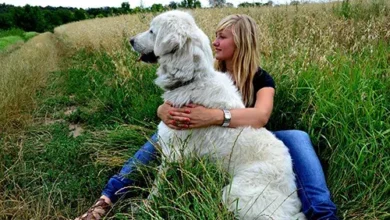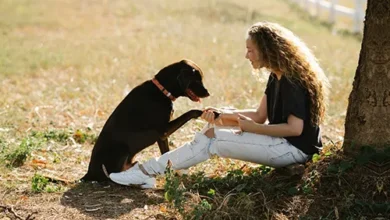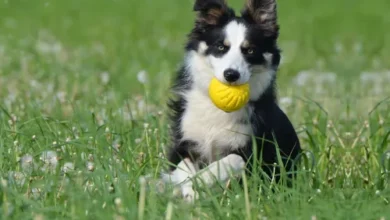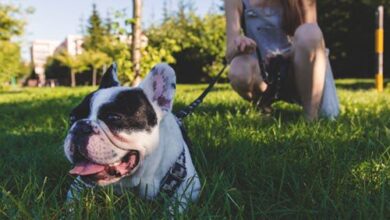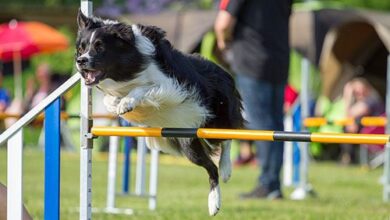How To Rehabilitate a Neglected or Abused Dog?
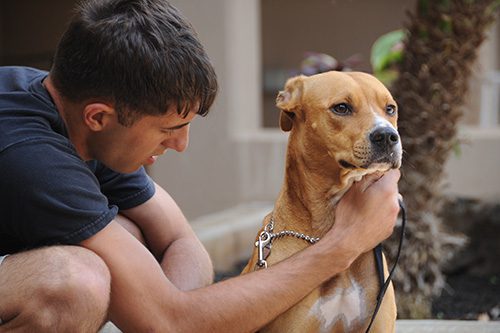

Re-educating or rehabilitating a dog is somehow unlearning to relearn. As a return to square one while taking into consideration any errors and shortcomings of the past.
How to rehabilitate a dog? All the answers here, across 5 major axes:
Know the past of the dog
To start a canine rehabilitation, we must first know the causes that lead to this famous reeducation: why should we implement a reeducation? What lived (or did not live) our dog that would require such an “update”?
It is not a question of reproducing a universal diagram to put a dog in the right way. It is important to know one’s past, good and bad experiences, sensitivity, character or emotional state past and present, so that rehabilitation is effective and above all respectful.


And if you just adopted a dog and you do not know anything about his past, then it will be necessary to observe daily to learn to know his animal and know who has to do.
In addition, in many cases of canine rehabilitation, I strongly advise the use of professional help not to make mistakes or to exacerbate a situation that can sometimes be very complex, even dangerous in some cases.
In addition, before going on to the 4 following axes, which will allow you to know concretely what you will have to put in place, know that this article can concern all the profiles. Indeed the reeducation of a dog can concern:
Establish rules of life
Establishing rules of living at home is necessary in all cases: that your dog is to rehabilitate or educate anyway!
This point will be very important especially for dogs adopted as a result of ill-treatment or rather unstable living conditions.
Any dog, from the most independent to the most potty of glue, will need limits and a frame on a daily basis to be in his feet. As a responsible master, you must allow your dog to have landmarks and a reassuring and secure living environment.
To do this, several points to respect:
A comfortable and secure space
You must offer your dog his own space within the house. He can also benefit from several spaces, but in all cases, he must understand that he has his place within his social group.
This is done of course through a basket, placed in a corner of the living room. This basket must be comfortable enough for your dog to feel comfortable and respected enough to feel safe.
The basket must be his refuge place, a place in which he knows he will be able to go there and be quiet, without anyone ever disturbing him.
So, never disturb your dog when he is in his basket, even to pet him! Prefer to call him to come to you instead of interfering in his bubble.
Regulated access to resources
Your dog must also understand that everything that makes up the home does not belong to him! He must learn to share and manage his frustration when an element (a place, object, furniture or food) is forbidden to him.
Thus, to give you several examples: teach your dog to wait before eating his bowl, do not give him food when you are at the table, do not allow him to follow you everywhere, ban a room in the house, learn him to go and stay in his basket, etc.
All these little details will help your dog understand that there is a framework and limits to respect. This will make him feel better, because he will feel much safer than if he were left to himself.
Controlled contacts
Finally, one of the major points to respect is that of contacts! Your dog must learn not to beg, he must learn to wait for your validation before making contact.
In short, you must be on the initiative of the contacts and not accept the requests sometimes insistent of attention of your dog.
“Why would it rehabilitate my dog,” you say to me! Well simply because a dog who always gets what he wants is a dog that will ultimately hurt in his legs since he will not know what frustration is. And this feeling of frustration is very important to manage, on a daily basis, at the risk of having a dog that is perceived more as a constraint rather than a company.
The learning of frustration goes through the management of contacts! Once your dog wants to initiate a contact, take this into account, but ignore his attitude by turning his back on him (do not talk to him, do not touch him and do not look at him). As soon as he has moved on, it’s up to you to initiate a contact so that he understands the following: I give up, I win! I manage my frustration, I get satisfaction!
Meet the needs of the dog
Then, to rehabilitate a dog, it is very important to respect him in his true nature. Thus, meeting one’s needs and spending it at the level of one’s expectations is an integral part of the educational re-balance.
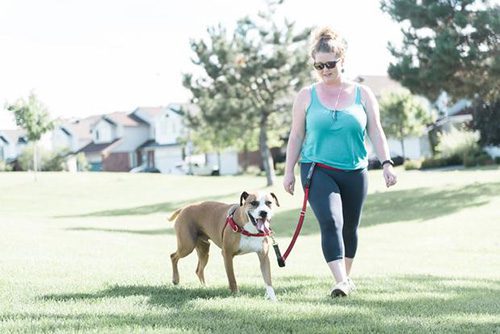

The answer to these needs will allow you to reinforce the relationship that you have with your dog but also to gain his confidence, because he will know that by your side, he will have no more shortcomings, whatever they are!
Meeting the needs of your dog goes through 4 points:
Social needs: your dog must be able to meet humans and dogs regularly so as not to be isolated, to develop and maintain his communication codes and thus, to find a social and mental balance of quality.
Physical needs: a dog, whether it is a pleasure dog or a work dog, will always need to be physically active through walks outside his home. This will allow him to simply let off steam and evacuate any negative emotions (boredom, stress, etc.).
Mental needs: this expense is by far one of the most important! Each dog will need to be stimulated intellectually as regularly as possible. This is done through playful educational sessions (learning by play), learning tricks, occupation games, reflection, etc.
Olfactory needs: the most developed sense of the dog is its sense of smell, the olfactory expenditure of your dog will be essential and can be filled through daily walks outside the garden, by tracking sessions at home or outdoors by congenial encounters, etc.
Then, of course, the answer to the needs of your dog also goes through the so-called primary needs: drink, eat and sleep! Some dogs in rehabilitation were sometimes not completely filled on this point, so it will be very important for you to reinstitute rituals: water at will, one or two meals a day (attention, no self-service) and a comfortable place to rest.
Have a consistent attitude
In the rehabilitation of your dog, your attitude will be decisive! You will have to be a real landmark for your dog and he will not let you go! If you show your weaknesses or doubts, your dog will feel it and will no longer trust you and sometimes more confidence in him either.


